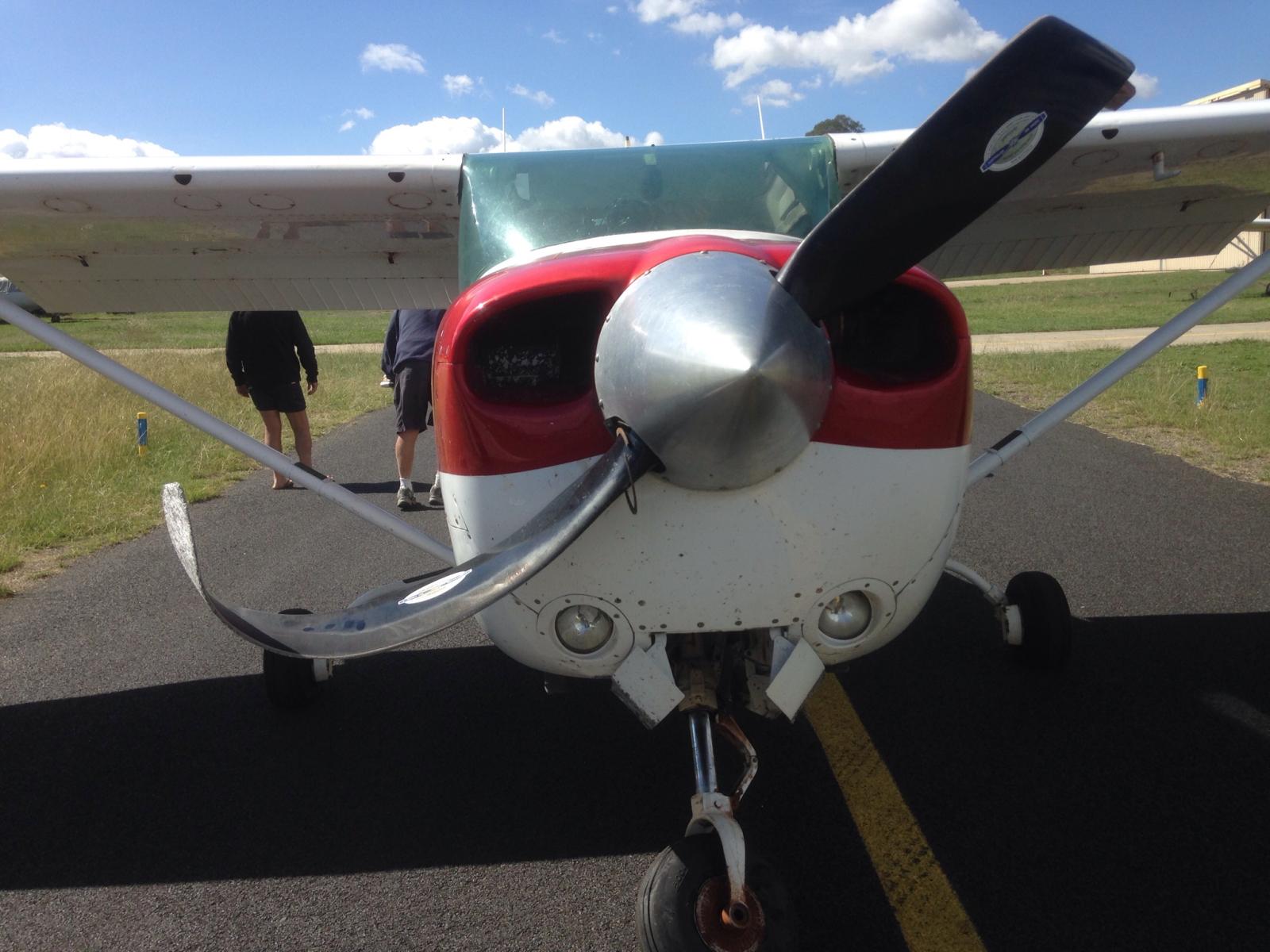What happened
On 1 April 2017, the pilot of a Cessna R182 aircraft, registered VH-JXX, conducted a private flight from Broken Hill to Bathurst, New South Wales, with one passenger on board.
The aircraft arrived overhead Bathurst Airport at about 1130 Eastern Daylight-saving Time (EDT) and the pilot elected to join the circuit on a left downwind for runway 35. The pilot reported that the approach was normal, and that they aimed to touch down slightly beyond the runway threshold.
Due to a crosswind of about 8 kt, the pilot recalled that the left main wheel touched down immediately before the right. The propeller then struck the runway and the nose landing gear collapsed. The aircraft skidded a short distance before coming to rest on the runway.
The aircraft sustained substantial damage and the pilot and passenger were uninjured (Figure 1).
Figure 1: VH-JXX showing damage to the propeller and nose landing gear

Source: Aircraft owner
Pilot comments
The pilot commented that the approach seemed normal, all indications were normal, and the landing did not feel particularly hard. The first time they were aware something was not normal was when the nose of the aircraft contacted the runway. They had lowered the landing gear on downwind and confirmed the green light indicated the gear was safely down and locked, and had also verified the main wheels were down by doing a visual check.
Post-accident inspection
An aircraft maintenance engineer inspected the aircraft after the accident. The nose landing gear had collapsed, and the gear doors were broken. The cowl flaps were damaged, the firewall was buckled and the area under the floor in the area near the pedals was bent. There was no evidence of any fault other than the damage sustained in the impact.
Findings
These findings should not be read as apportioning blame or liability to any particular organisation or individual.
- The aircraft probably landed in a nose-low attitude resulting in a propeller strike and damage to the nose landing gear.
Aviation Short Investigations Bulletin Issue 61
Purpose of safety investigationsThe objective of a safety investigation is to enhance transport safety. This is done through:
It is not a function of the ATSB to apportion blame or provide a means for determining liability. At the same time, an investigation report must include factual material of sufficient weight to support the analysis and findings. At all times the ATSB endeavours to balance the use of material that could imply adverse comment with the need to properly explain what happened, and why, in a fair and unbiased manner. The ATSB does not investigate for the purpose of taking administrative, regulatory or criminal action. TerminologyAn explanation of terminology used in ATSB investigation reports is available here. This includes terms such as occurrence, contributing factor, other factor that increased risk, and safety issue. Publishing informationReleased in accordance with section 25 of the Transport Safety Investigation Act 2003 Published by: Australian Transport Safety Bureau © Commonwealth of Australia 2017
Ownership of intellectual property rights in this publication Unless otherwise noted, copyright (and any other intellectual property rights, if any) in this report publication is owned by the Commonwealth of Australia. Creative Commons licence With the exception of the Coat of Arms, ATSB logo, and photos and graphics in which a third party holds copyright, this publication is licensed under a Creative Commons Attribution 3.0 Australia licence. Creative Commons Attribution 3.0 Australia Licence is a standard form licence agreement that allows you to copy, distribute, transmit and adapt this publication provided that you attribute the work. The ATSB’s preference is that you attribute this publication (and any material sourced from it) using the following wording: Source: Australian Transport Safety Bureau Copyright in material obtained from other agencies, private individuals or organisations, belongs to those agencies, individuals or organisations. Where you wish to use their material, you will need to contact them directly. |


